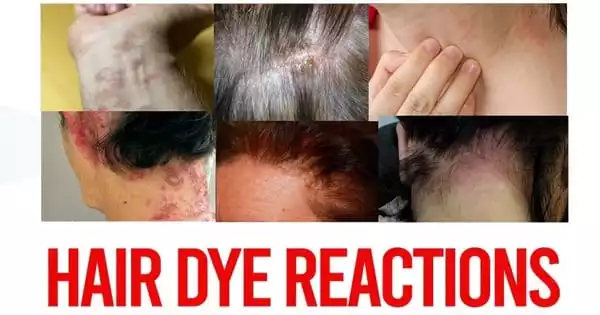PPD-containing hair colors are safe to use as long as the safety warnings are followed. These products are strictly controlled, and there is a maximum amount of PPD that can be present. If you disregard the safety warnings that come with the color, you could have a dangerous response.
PPD is a hazardous chemical compound known as p-phenylenediamine or Para-phenylenediamine that is widely used in the production of inks and dyes. It is an oxidative pigment used in the production of hair dyes to produce dark colors, most notably black and dark brown. It can even be found in botanical dyes such as henna.
Many hair dyes contain components that can irritate or create an allergic reaction in your skin. Researchers have created a line of permanent hair dyes that do not contain the allergic qualities seen in previous formulations.
A sloppy dye job is bad enough, but an itchy and stinging allergic reaction to it is even worse. People who become allergic to hair dye might develop sensitivities to a variety of other common compounds, turning a simple cosmetic treatment into a major issue. Researchers have developed a range of permanent hair dyes that avoid the allergic qualities of standard formulations, according to a paper published in ACS Sustainable Chemistry & Engineering.
Seven dyes based on PPD with aromatic amine core modifications were developed by the researchers. The changes were chosen to make the chemicals less reactive to proteins and less absorbable through skin. All seven chemicals permanently dyed hair samples, resulting in a spectrum of colors ranging from rosy pinks to deep blacks that did not fade even after three weeks of regular washing.
When used as a hair color, paraphenylenediamine (PPD), a popular ingredient in permanent dyes, causes a chemical reaction that results in a dark hue that will not wash out over time. However, this reaction can also produce chemicals that bind proteins in the user’s skin, resulting in allergic reactions such as eczema and face swelling.
PPD can also make users sensitive to other drugs, such as a molecule used in sunscreens and cosmetics, as well as popular pigment and ink compounds. Alternatives have been offered, however they are often insoluble in water, and the safety of some of the compounds is unknown. Gopalakrishnan Venkatesan and colleagues intended to develop novel alternatives to PPD while still offering permanent hair coloring.

Your scalp and face may become itchy and swollen if you are allergic to PPD. PPD can also cause symptoms all over your body, such as itching, a nettle rash, and an overall feeling of being sick. These symptoms may not appear for hours, days, or even weeks.
Seven dyes based on PPD with aromatic amine core modifications were developed by the researchers. The changes were chosen to make the chemicals less reactive to proteins and less absorbable through skin. All seven chemicals permanently dyed hair samples, resulting in a spectrum of colors ranging from rosy pinks to deep blacks that did not fade even after three weeks of regular washing.
The colors were then subjected to a test routinely used in the cosmetics sector to evaluate whether a product is a skin sensitizer. Five of the changed dyes were classified as “poor” sensitizers, while PPD was classified as “moderate.” Another test revealed that the novel chemicals caused a lower inflammatory response in cells when compared to PPD. These findings imply that the new dyes can effectively color hair while avoiding the allergic and sensitization hazards associated with more traditional colors.
If you have a minor response to hair dye, you should stop using PPD-containing products immediately because there is a chance you will have a more serious reaction in the future. Switch to a safer alternative, such as a non-permanent, PPD-free hair color – but be aware that a reaction to this is still possible.















